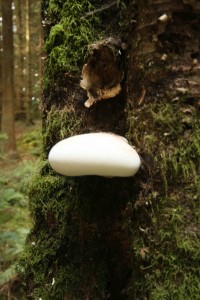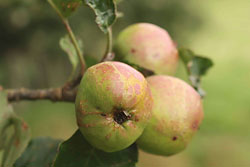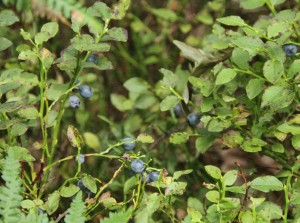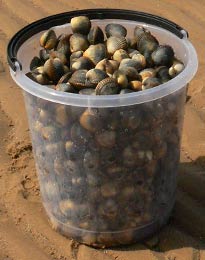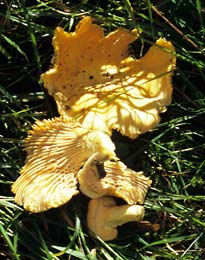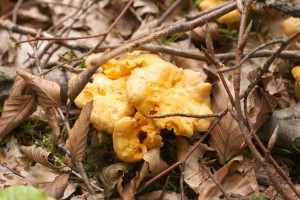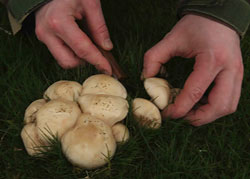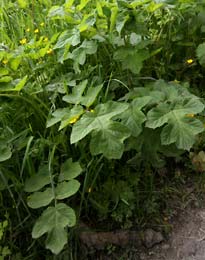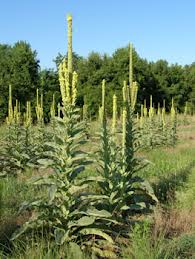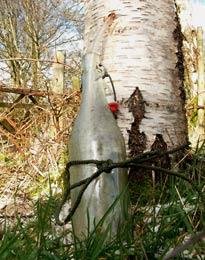One of the most evident wild mushrooms in autumn and winter is the birch polypore or birch bracket (Piptoporus betulinus). This rubbery bracket fungus, which as its name suggests, virtually always grows on birch is inedible, but it is still of interest to any keen forager. If thinly sliced and dried, it makes excellent tinder […]
Wild Food
Crab Apple
The small hard apples that festoon hedges across Britain are actually ‘wildings’ being the descendents of discarded apple cores. They are most common in western areas, but can be found anywhere. Apples are the result of chance insect-borne pollination, so these feral trees produce unpredictable fruit. A few are edible, but most are too hard and bitter for our taste. They are still worth harvesting, however. Mediaeval cooks bottled the strained juice as verjuice and used the astringent liquid as a substitute for lemon (a modern version is still used in Normandy cooking).
Bilberry
One of the richest sources of vitamins and calories in Europe’s wilder uplands is the whimberry. At least that’s its name in Mid-Wales, but elsewhere it is known as the bilberry or blueberry and in France as myrtille. It festoons a low-growing shrub that jostles for space with heather and the thin mountain grasses. The […]
Cockles
Our Neanderthal ancestors must have struggled to find food in the depths of winter, but the coast is always rich in calories. Cockles were particularly valued and remained staples for the urban poor during the Industrial Revolution. Well after the Second World War they were sold in huge numbers in London’s East End, Liverpool and the cities of the North East, but recently they have fallen out of favour in Britain (although they are still highly-rated in much of Europe).
Chanterelles
Meanwhile, the vast majority of us walk past the valuable wild bounty that cascades out of the leaf mould by our feet – oblivious not only to their identity, but to the very existence of these pretty little mushrooms. For although bright yellow and often growing clustered together in huge numbers, they are surprisingly well-camouflaged, disappearing into backdrop of leaf mould and dead grass of their woodland habitat.
Chanterelles – An Overview
With the first chanterelles of the year due to appear (some are already beginning to emerge in Bedfordshire), here is a piece I wrote for The Telegraph in 2006 . . . “We get the European ones from May onwards, but the main Scottish harvest doesn’t start until July,” says Tony Booth, Britain’s top wild […]
St Georges
This Easter fungus is one of Britain’s most flavourful species, with a wonderful mealy taste that works particularly well with white meat or eggs. These grow in rough, untidy, rings in grassland and gills, stalk and cap are all off-white, but are shaped like a conventional mushroom. The guide books say the cap has the texture of kid leather, but a better guide is the strong mealy scent. Should you find such a ring, you are on fairly strong ground, because although there are poisonous white ‘ring’ mushrooms, these are all autumn species.
Hogweed
Hogweed is so common it barely attracts a second glance from most people. Sometimes called cow parsnip, it grows in huge large-leafed clumps across the country, producing its characteristic white headed large bouquets of white flowers from July.
Mullein
Great mullein (Verbascum Thapsus – also known as Aaron’s rod, Adam’s flannel and Our Lady’s candles) is a relatively common plant on wasteland and verges. This tough biennial produces a rosette of woolly leaves in its first year around a tall stalk. In its second summer, this is adorned with clusters of five-petalled yellow flowers […]
Silver Birch Wine
This tree’s sobriquet ‘silver’ is a comparatively recent invention – often credited to a Tennison poem. In reality the second part of its scientific name (Betula alba) seems more apt (it means ‘white’). This is particularly so in late winter when the bleached bark stands out in damp woods. Foresters usually regard it as a weed, but more charitable voices describe it as a ‘pioneer’, for this is usually first to appear on waste ground, thanks to its downy seeds which can be carried long distances by the wind.

